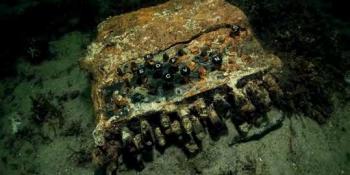ANTI-INVASION EXERCISE
In 1940, with German invasion looming, an unlikely beach obstacle was put up against one of the heaviest tanks available with surprising results.
Following the evacuation of the British Expeditionary Force from Dunkirk and other French ports in summer 1940, the fear that Germany would invade Britain was genuine and in many eyes realistic.
The island’s defence depended on the might of the Royal Navy and a modern RAF – but what if the Luftwaffe could nullify both of these vital services? Bruised though it may have been, there was an army and before long the Home Guard and thousands of hardened structures – pillboxes, thrown up in lines – that would bolster the defence.
Today, the general appreciation is that Britain’s anti-invasion efforts were more likely to have been worthwhile than the opposite. Any German landing would be precarious, given the Kriegsmarine was already depleted with several principal combatants sunk or in repair and having lost about half of its destroyers. This would demand more of an overstretched Luftwaffe, required to deal with the remnants of an RAF and its lastditch Operation Banquet effort, while simultaneously deploying an airborne spearhead, coverin…




